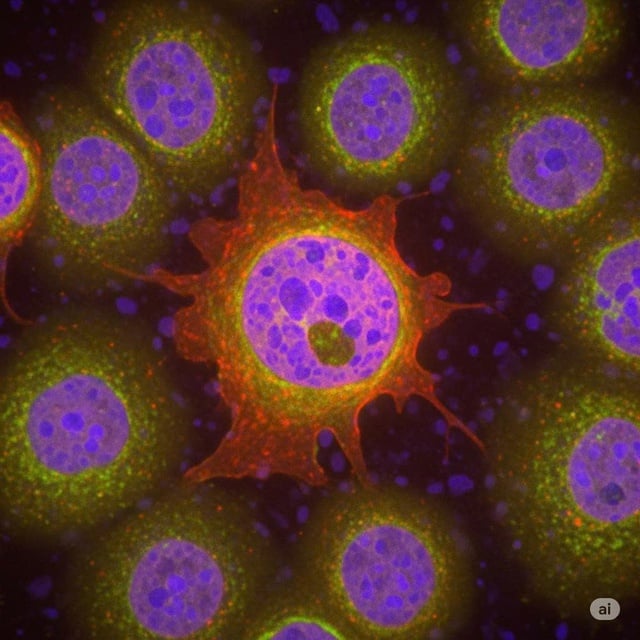It is Ethyl p-methoxycinnamate (EMC), the main ingredient of kencur ginger. Researchers have discovered that this substance can prevent tumor growth and block the energy source that feeds the tumor, according to the medical news site News Medical.
Kencur ginger ( scientific name Kaempferia galanga L.), also known as Kaempferia galanga or fragrant ginger, sand ginger, belongs to the ginger family, and is grown mainly in Southeast Asian countries.

Discovered a natural compound in ginger that can cut off the energy source that feeds cancer cells
Photo: AI
Energy production in normal and cancer cells
In the body, cells create energy by oxidative phosphorylation, in which glucose is oxidized to produce ATP (adenosine triphosphate), an energy-carrying molecule that transports energy for use by cells and sustains life.
In contrast, cancer cells do not generate ATP energy by oxidizing glucose, but rather primarily through a process called glycolysis, known as the Warburg effect, in which glucose is fermented into pyruvic acid and lactic acid, promoting rapid ATP production.
Although this pathway is considered less efficient than normal, it remains a mystery why cancer cells use this mechanism to support rapid cell growth, proliferation, and uncontrolled survival.
In previous research, Dr. Akiko Kojima-Yuasa, at Osaka Metropolitan University (Japan), discovered that EMC has an inhibitory effect on cancer cells. Now, she continues to lead research to delve deeper into the mystery by closely examining the impact of EMC on the energy of tumor cells.

EMC can inhibit tumor growth and block the energy source that feeds the tumor.
Photo: AI
The study authors applied EMC to tumor cells in mice to see how EMC cuts off the energy supply to cancer cells.
Results found: After EMC treatment, tumor cells had significantly reduced ATP energy levels, possibly due to reduced fatty acid synthesis. Since fatty acids serve as essential building blocks for both energy storage and cancer cell growth, by targeting this lipid, EMC causes a decrease in energy that impairs tumor growth and survival.
Interestingly, despite the inhibition of fatty acid synthesis, cancer cells still responded by increasing glycolysis, in a bid to survive the reduced energy supply. This demonstrates the complexity of cancer cells and their efforts to adapt and withstand the complete collapse of energy sources, highlighting the resilience of cancer in adverse environments.
This suggests that the use of EMC to inhibit tumor cells may need to be combined with other therapies to completely eliminate tumors.
This discovery opens up promising avenues for targeted therapy to inhibit cancer cells, not by inhibiting glycolysis as previously hypothesized, but by inhibiting fatty acid synthesis.
These findings are a starting point for cancer metabolism research, which is expected to help develop new treatments, said Dr. Kojima-Yuasa, according to News Medical.
Source: https://thanhnien.vn/loai-gung-co-the-triet-duong-song-cua-te-bao-ung-thu-185250615081313158.htm
































































































Comment (0)